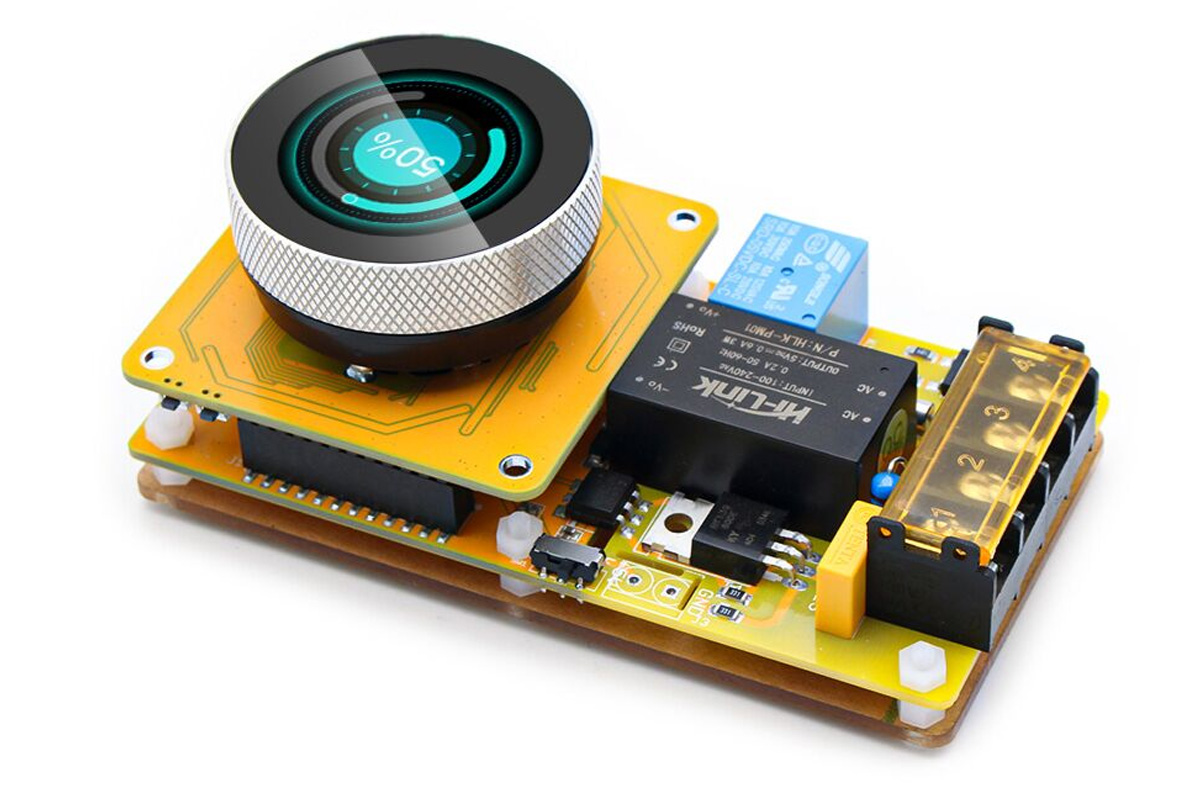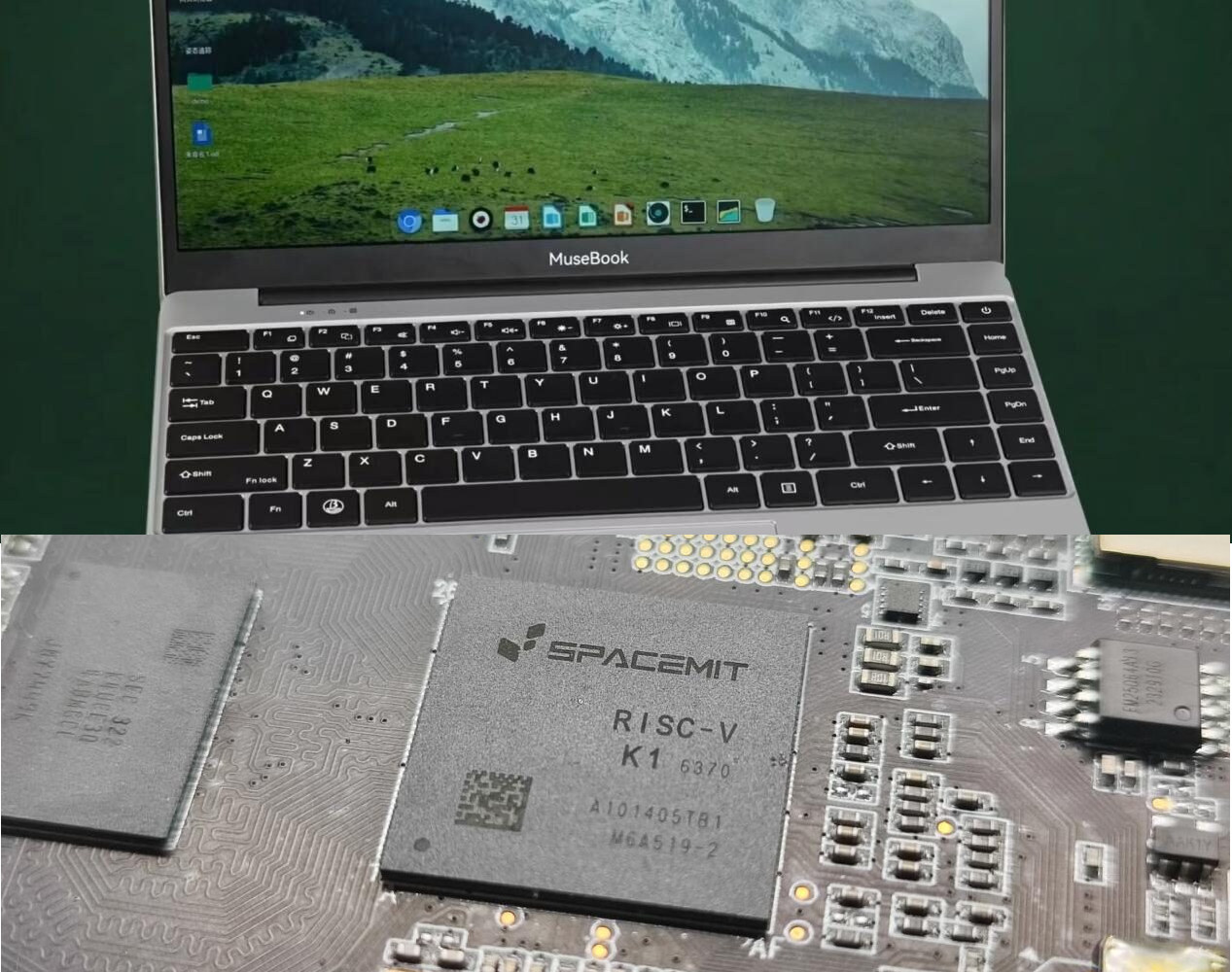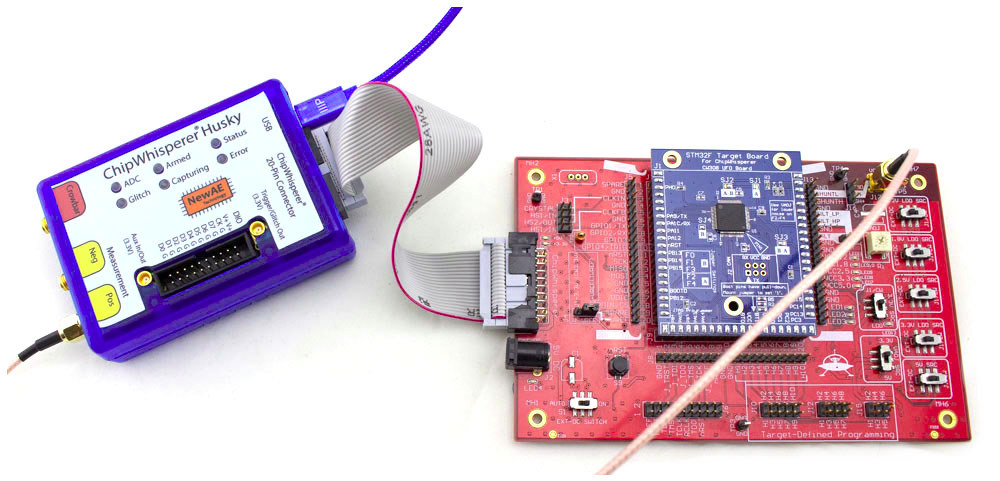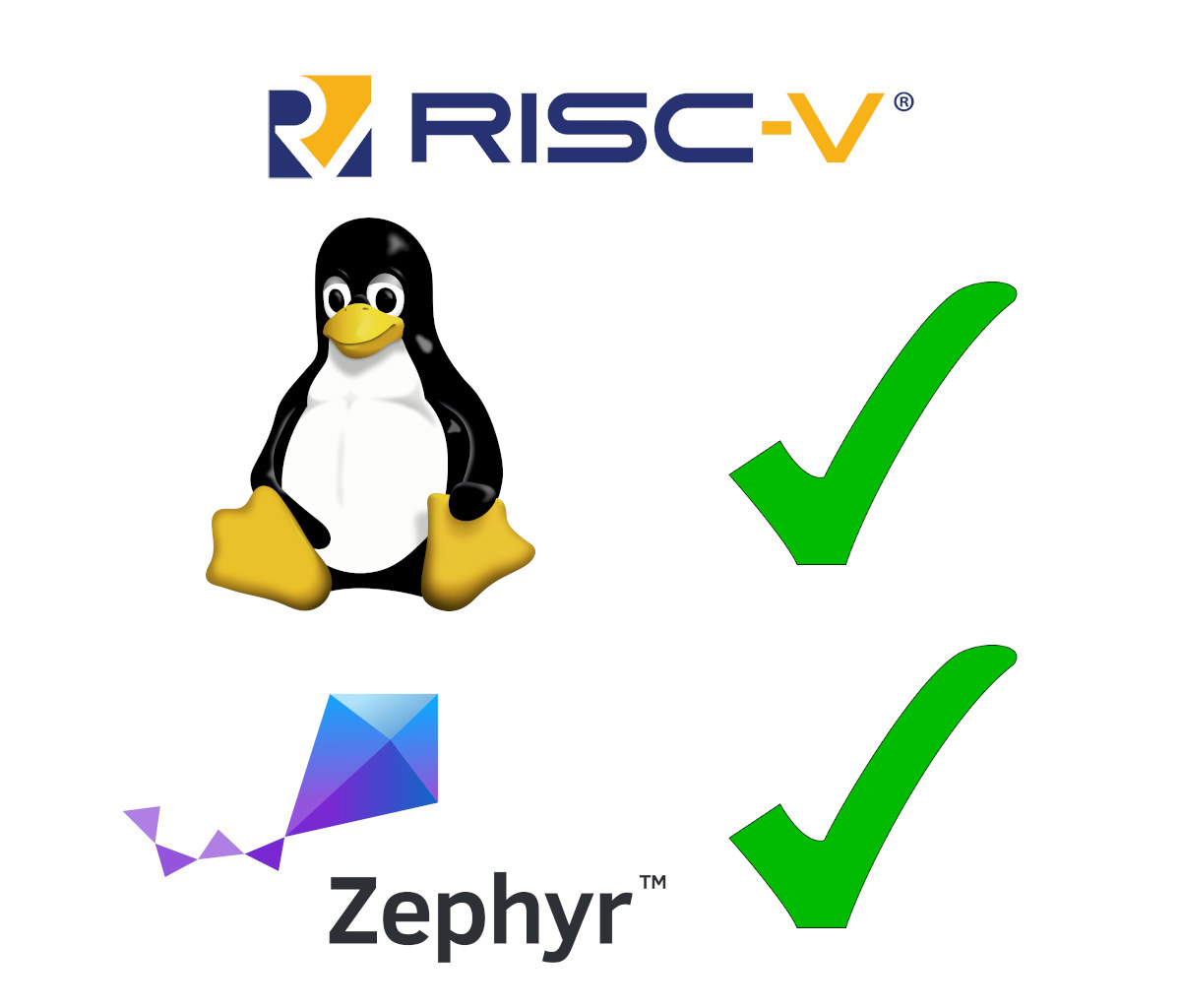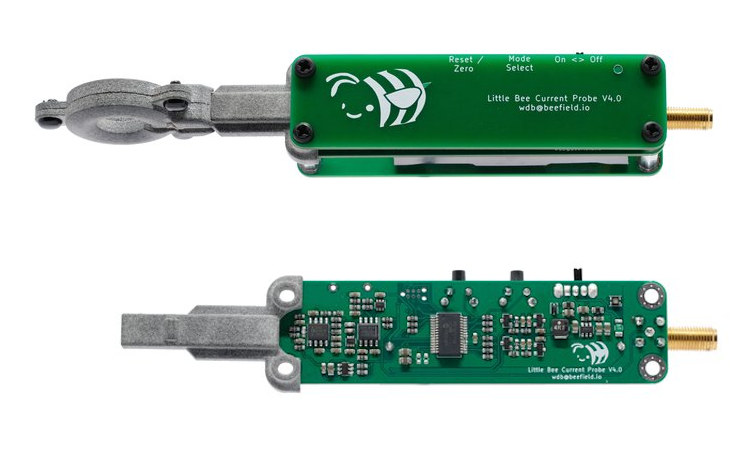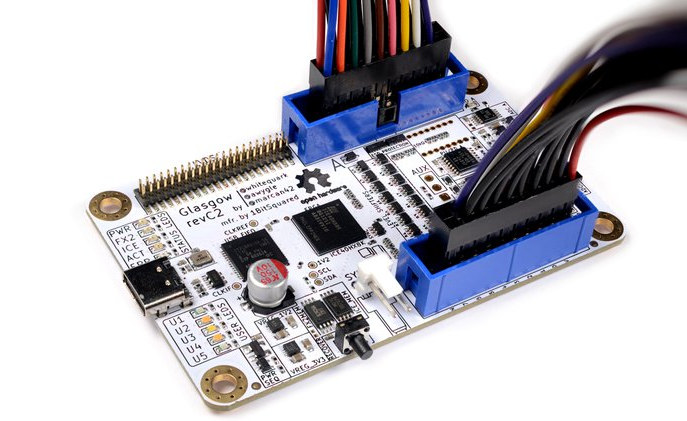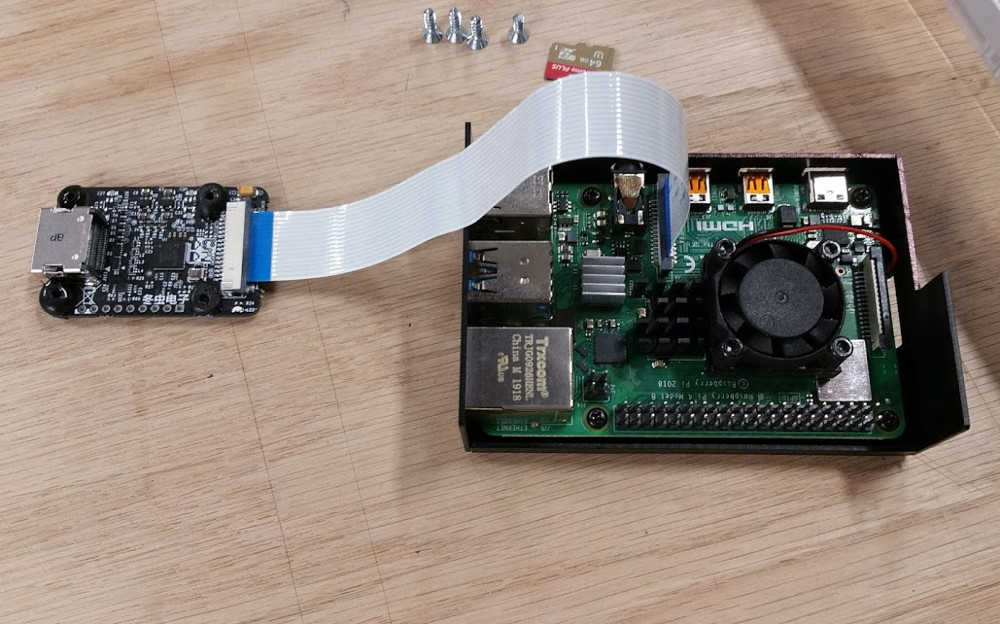Makerfabs has recently introduced Matouch 1.28-inch ToolSet_AC Dimmer an open-source ESP32-based AC voltage controller for dimming lights or adjusting motor speeds using phase-cut dimming. Built around an ESP32-S3 wireless MCU, it features a 1.28” capacitive touch display (240×240), and a UI designed with LVGL/Squareline and the Arduino V2.3.4 IDE. The device relies on a BT139 Triac and a zero-cross detection circuit for precise AC voltage control, along with an onboard relay to enable a full AC on/off switch. With an integrated AC-DC module providing 5V @ 0.6A, it can operate within an input range of AC 100-240V, 50Hz-60Hz, with a maximum load of 10A at 240VAC. Designed for home and industrial applications, it can control lighting environments and electrical appliances while being open-source for customization and integration into various automation projects. Matouch 1.28-inch ToolSet_AC Dimmer specifications: SoC – Espressif Systems ESP32-S3 CPU – Xtensa® Dual-core 32-bit LX7 Microprocessor with up to 240MHz […]
ALLPCB – An ideal PCB manufacturer for PCB professionals and businesses (Sponsored)
ALLPCB is an ideal PCB manufacturer for PCB professionals and businesses thanks to additional customization options compared to competitors, monthly discounts for business users, and post-delivery payment options, besides ultra-fast delivery services and quality assurance services. ALLPCB customization options ALLPCB excels at higher specification boards and more complex PCB designs, which is why ALLPCB provides more customized quote options than competitors. Let’s take JLCPCB, one of ALLPCB’s main competitors, as an example starting with “Surface Finish” options for FR-4 material. JLCPCB offers three options, namely HASL (with lead), LeadFree HASL, and ENIG, but ALLPCB offers a total of 12 different surface finish options. That would the the same first three as in JLCPCB, but also OSP, Bare Copper, Immersion Tin, Immersion Silver, Gold Plating, ENEPIG, OSP+ Selective ENIG, Lead-free HASL + Selective ENIG, and Lead-free HASL + Selective Gold Plating ALLPCB also offers a PTH (Plating Through Hole) copper thickness […]
Muse Book laptop features SpacemiT K1 octa-core RISC-V AI processor, up to 16GB RAM
SpacemiT, a chip design company from China with RISC-V as its core technology, recently unveiled the Muse Book laptop based on the K1 octa-core RISC-V chip. Unlike our daily laptops, it has many interesting unique features and is mainly sold to hardware engineers and DIY enthusiasts. This Muse Book runs the Bianbu OS operating system based on the Debian distribution and optimized to run on the SpacemiT K1 octa-core RISC-V SoC. Let’s first take a look at its external interfaces. On the left side of the laptop, there are two USB Type-C interfaces, a USB 3.0 Type-A port, a 3.5mm headphone jack, a microSD card slot, and a reset pinhole. The 8-pin header on the right side of the laptop is quite interesting, and SpacemiT hopes the Muse Book can become one of the most convenient hardware development platforms for RISC-V. In addition to the power pins, users will find […]
ChipWhisperer-Husky is a palm-sized power analysis and fault injection tool (Crowdfunding)
NewAE Technology’s ChipWhisperer-Husky is a compact tool designed for side-channel power analysis and fault injection with features such as a high-speed logic analyzer used to visualize glitches, real-time data streaming for attacking asymmetric algorithms, and support for JTAG/SWD programming. The security research company explains its device delivers a more stable and reliable experience compared to other off-the-shelf test gear such as oscilloscopes and function generators thanks to features such as synchronous sampling, which means the sample clock of your target device and the sample clock of ChipWhisperer-Husky can be perfectly aligned, or the ability to generate glitches, including clock glitches that can be less than a nanosecond wide. ChipWhisperer-Husky key features and hardware specifications: Synchronous clock for capture board and target board for significantly improved performance over a typical asynchronous oscilloscope setup 12-bit 200MS/s ADC for capturing power traces – It can be clocked at both the same clock […]
The RISC-V Platform Specification aims to ensure RISC-V hardware and software compatibility
The RISC-V platform specification aims to define a set of rules to make sure operating systems like Linux or the Zephyr Project can boot properly on all RISC-V hardware compliant with the specs. If you’ve ever worked with the Arm Linux kernel over ten years ago, you may remember board files, which were replaced by device tree bindings, and eventually, Arm defined several standards culminating with Arm SystemReady certifications allowing compliant Arm platforms to boot off-the-shelf OS images like in the x86 world. While we are probably a long way from a “RISC-V SystemReady” platform certification program, the RISC-V platform specification is currently being worked on to define requirements for two types of platforms with optional extensions: OS-A Platform: This specifies a rich-OS platform for Linux/FreeBSD/Windows…flavors that run on enterprise and embedded class application processors. Current extension: Server Extension M Platform – This specifies an RTOS platform for bare-metal applications […]
Little Bee is an affordable, open hardware current & magnetic field probe (Crowdfunding)
Little Bee is an affordable, open-source hardware, and high-performance current probe and magnetic field probe designed to debug and analyze electronic devices at a much lower cost than existing solutions such as Migsic CP2100B or I-prober 520. This type of tool is especially important for power electronics, which has become ever more important with electric vehicles, alternative energy solutions, and high-efficiency power supplies. Little Bee B1 hardware specifications and key features: Based on Anisotropic Magneto-Resistive (AMR) magnetic sensor. Adjustable bandwidth (10 MHz and 1 MHz) Adjustable gain (1x and 4x) Automatic zeroing SMA Output Connector for connection to any standard 1 MΩ impedance oscilloscope input Current sensing Bandwidth – DC – 10 MHz Sensitivity – 0.25 Volts/Amp Max Current – +/- 5 A Noise – 3 mA RMS at 10 MHz bandwidth, 2 mA RMS at 1 MHz bandwidth DC Accuracy – +/- 15% Insertion Impedance – 100 nH in […]
Glasgow Interface Explorer is an iCE40 FPGA based hardware debugging tool (crowdfunding)
We’ve seen some pretty interesting boards for hardware hackers and reverse engineers in recent months with the likes of Ollie and Tigard USB debug boards that allow interfacing various hardware interfaces and/or flashing firmware to different types of target boards. Here’s another one: Glasgow Interface Explorer. Based on Lattice Semi iCE40 FPGA, the board is described as being “designed for hardware designers, reverse engineers, digital archivists, electronics hobbyists, and anyone else who wants to communicate with a wide selection of digital devices with minimum hassle”. Glasgow Interface Explorer specifications: FPGA – Lattice Semiconductor iCE40HX8K FPGA USB – 1x USB-C port connected to FX2 high-speed USB interface capable of 480 Mbps throughput I/O headers 2x 8-channel I/O banks with 16 highly flexible I/O Each I/O bank comes with A dedicated programmable linear voltage regulator, configurable from 1.8 V to 5 V and providing up to 150 mA of power A dedicated […]
DIY Pi KVM: An easy and cheap KVM over IP for Raspberry Pi
Traditional IP-KVM systems may cost you hundreds of dollars. DIY Pi KVM over IP is a very simple and fully functional Raspberry Pi-based KVM over IP that you can make yourself. If you do not know what IP-KVM is, it stands for keyboard, video, and mouse. It allows you to connect to a computer or a server remotely. With this, you can fix problems such as configuring the BIOS or reinstalling the OS using a virtual CD-ROM or flash drive. You can see the v2 example implementation in the above image. Pi-KVM v0 and v2 are ready-made images available for download for Raspberry Pi. You will find all the required hardware in the “Getting Started” section for the v0 and v2 platform for Raspberry Pi. In the figure below you can see the B101 HDMI-to-CSI bridge connected to the Raspberry Pi. The team is working to launch the v3 board […]


